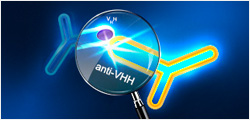| Species |
Human |
| Protein Construction |
CXCL7 (Ala59-Asp128)
Accession # P02775 |
|
| Purity |
> 97% as analyzed by SDS-PAGE
> 97% as analyzed by HPLC |
| Endotoxin Level |
< 1 EU/μg of protein by LAL method |
| Biological Activity |
Fully biologically active when compared to standard. The biological activity determined by a chemotaxis bioassay using human peripheral blood neutrophils is in a concentration range of 1.0-10.0 ng/ml. |
| Expression System |
E. coli |
| Theoretical Molecular Weight |
7.6 kDa |
| Formulation |
Lyophilized from a 0.2 μm filtered solution in 20 mM PB, pH 7.4, 50 mM NaCl. |
| Reconstitution |
It is recommended that this vial be briefly centrifuged prior to opening to bring the contents to the bottom. Reconstitute the lyophilized powder in sterile distilled water or aqueous buffer containing 0.1 % BSA to a concentration of 0.1-1.0 mg/ml. |
| Storage & Stability |
Upon receiving, this product remains stable for up to 6 months at -70°C or -20°C. Upon reconstitution, the product should be stable for up to 1 week at 4°C or up to 3 months at -20°C. Avoid repeated freeze-thaw cycles. |
| Target Background |
Neutrophil Activating Peptide 2 (NAP-2) is proteolytically processed carboxyl-terminal fragments of platelet basic protein (PBP) which is found in the alpha-granules of human platelets. NAP-2 is a member of the CXC chemokines. Similar to other ELR domain containing CXC chemokines such as IL-8 and the GRO proteins, NAP-2 has been shown to bind CXCR-2 and to chemoattract and activate neutrophils. Although CTAP-III, β-TG and PBP represent amino-terminal extended variants of NAP-2 and possess the same CXC chemokine domains, these proteins do not exhibit NAP-2 activity. Recently, it has been shown that the additional amino-terminal residues of CTAP-III masks the critical ELR receptor binding domain that is exposed on NAP-2 and may account for lack of NAP-2 activity. |
| Synonyms |
PPBP; B-TG1; Beta-TG; CTAP-III; CTAP3; CTAPIII; CXCL-7; LA-PF4; LDGF; MDGF; NAP2; PBP; SCYB7; TC1; TC2; TGB; TGB1; THBGB; THBGB1; pro-platelet basic protein |
For laboratory research use only. Direct human use, including taking orally and injection and clinical use are forbidden. ������

































